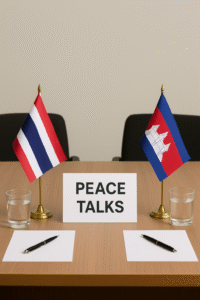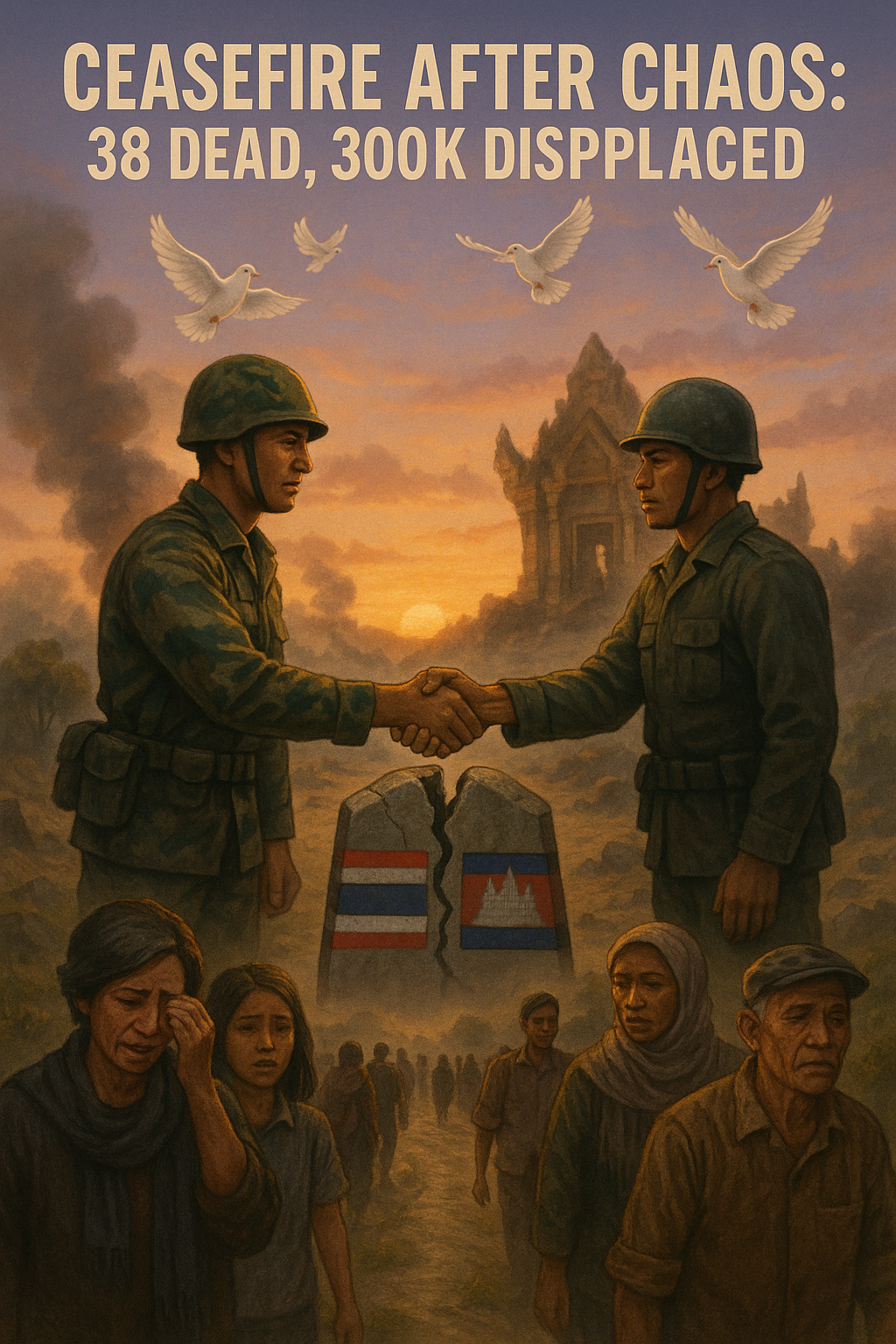A New Dawn After Days of Bloodshed
Thailand Cambodia ceasefire, In a major diplomatic breakthrough, a ceasefire agreement between Thailand and Cambodia officially took effect on July 28, 2025, ending a five-day-long violent border conflict that claimed at least 38 lives and displaced more than 300,000 civilians. The border flare-up, one of the most intense in recent history between the two Southeast Asian neighbors, left towns shattered, families torn apart, and global leaders scrambling for mediation.
The recent escalation near the Preah Vihear temple—a UNESCO World Heritage Site and a long-disputed zone—quickly spiraled into deadly clashes. The majority of the casualties were innocent civilians caught in the crossfire as mortar shells and heavy artillery fire rained down on residential areas near the conflict zone.
What Led to the Conflict?
Tensions between Thailand and Cambodia over territorial claims are not new. The area surrounding the ancient temple has been a point of contention for decades, with periodic outbreaks of violence. However, the July 2025 clashes marked the most severe conflict in over a decade, reviving old wounds and raising alarm bells across the international community. Thailand Cambodia ceasefire
Analysts believe the recent escalation was triggered by misunderstood military movements on both sides and intensified by nationalist rhetoric and political instability within both countries.
Global Powers Step In: Diplomacy Over Destruction
The turning point came with international intervention, led primarily by Malaysia, the United States, and China. Notably, former U.S. President Donald Trump played a crucial role in facilitating dialogue, reportedly linking peace efforts with the resumption of regional trade negotiations. His involvement gave both nations a strong economic incentive to de-escalate the conflict quickly.
The mediation resulted in a formal ceasefire deal, signed in Kuala Lumpur, which included provisions for immediate withdrawal of troops, establishment of a demilitarized buffer zone, and joint patrols to monitor the border.
Understanding a Ceasefire: What It Means and What It Doesn’t

A ceasefire is not a peace treaty. It’s a temporary suspension of fighting—a pause in violence that creates space for further negotiations, humanitarian aid, and diplomatic talks. In this case, the ceasefire does not resolve the underlying territorial dispute, but it offers breathing room for both countries to avoid further bloodshed. Thailand Cambodia ceasefire
Experts warn that without long-term political solutions, the situation remains fragile. However, the agreement is being seen as a vital first step toward lasting peace in the region.
Humanitarian Crisis: A Silent Aftermath
The cost of this conflict has been devastating. Over 300,000 residents, mostly from rural border villages, were forced to flee their homes. Makeshift refugee camps have sprung up across northern Cambodia and northeastern Thailand, with aid agencies racing against time to provide food, shelter, and medical support. Thailand Cambodia ceasefire
Many families remain separated, and infrastructure in the conflict areas—schools, hospitals, roads—has been badly damaged or completely destroyed.
What’s Next for Thailand and Cambodia?
The ceasefire offers a narrow but hopeful path forward. Both governments have agreed to resume talks on border demarcation with support from the Association of Southeast Asian Nations (ASEAN) and international observers. If successful, it might ultimately result in a formal peace agreement and a border area that is managed cooperatively.
Meanwhile, efforts are underway to reunite displaced families, rebuild affected areas, and ensure the safe return of refugees. Thailand has pledged to assist in reconstruction efforts, while Cambodia is calling for increased international support to stabilize the region.
Conclusion: A Fragile Peace, But a Step Forward
The ceasefire between Thailand and Cambodia is a welcome relief for the hundreds of thousands caught in the crossfire. While fragile, it opens a door for constructive dialogue and renewed cooperation. The next phase will test both nations’ commitment to peace—and the international community’s role in sustaining it.
Ready to open with latest news like this -> Vitalmintmedia


Leave a Reply